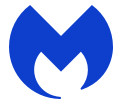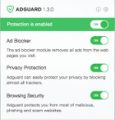What is DLVPlayer
DLVPlayer is supposed to be an application that will allow you to view anything the Web has to offer, but according to the Security researchers, it is a potentially unwanted application (PUA). PUAs are applications that most users install accidentally or unknowingly. In most cases, such programs are distributed through fake Flash Players, Java updates or as part of bundles. Often, along with DLVPlayer and other PUAs, adware can be installed on the Mac. Adware is a form of software that is developed with the sole purpose to display dozens of pop-ups, and thus to promote the goods and services in an open web-browser window. Adware can substitute the legitimate sponsored links on misleading or even banners that can offer to visit malicious webpages.
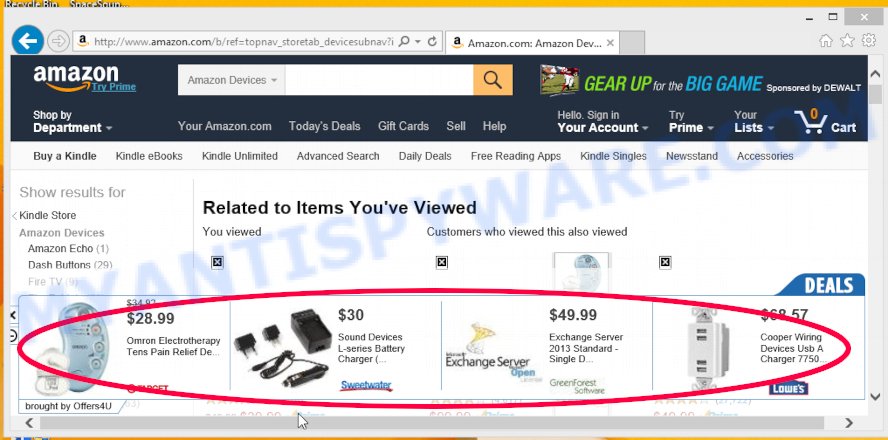
Unwanted ads
When your device is infected with Adware you will be forced to use its own search provider. It could seem not to be dangerous, but you still should be very careful, since it can display annoying and malicious ads developed to trick you into buying certain questionable apps or products, provide search results which may redirect your web-browser to certain deceptive, misleading or harmful web-pages. We suggest that you use only the reliable search provider such as Google, Yahoo or Bing.

Unwanted search ads
Does adware steal your personal data? Adware software can have spyware and keyloggers built into the application, leading to greater damage to your MAC and possible invasion of your privacy data.
If you want to uninstall DLVPlayer, Adware and other PUAs, you will not succeed, because it is very stubborn. Using the following instructions, you surely can remove any unwanted software completely from your computer.
How does DLVPlayer get on your computer
The most common way to get adware is a freeware installer. Most commonly, a user have a chance to disable all unneeded modules, but certain installation packages are designed to confuse the average users, in order to trick them into installing potentially unwanted applications and adware software. Anyway, easier to prevent adware rather than clean up your Apple Mac after one. So, keep your web-browser updated (turn on automatic updates), run good antivirus apps, double check free software before you launch it (do a google search, scan a downloaded file with VirusTotal), avoid misleading and unknown websites.
Threat Summary
| Name | DLVPlayer |
| Type | adware, PUP (potentially unwanted program), popup ads, pop-ups, pop up virus |
| Symptoms |
|
| Removal | DLVPlayer removal guide |
How to Remove DLVPlayer and Adware (removal instructions)
When the adware gets installed on your MAC without your knowledge, it’s not easy to remove. Most commonly, there is no Uninstall program which simply delete PUPs from your MAC system. So, we suggest using well-proven free specialized tool such as MalwareBytes Anti Malware. But the best way to get rid of adware will be to perform several manual steps, after that additionally run antimalware utilities.
To remove DLVPlayer, perform the steps below:
- Remove profiles created by PUAs
- Uninstall DLVPlayer associated software by using the Finder
- Remove DLVPlayer related files and folders
- Scan your Mac with MalwareBytes
- Remove unwanted ads from Safari, Chrome, Firefox
- How to stay safe online
- Finish words
Remove profiles created by DLVPlayer
PUAs can make changes to the Mac system such as malicious changes to browser settings, and the addition of malicious system profiles. You need to check the system preferences, find and remove malicious profiles and ensure your settings are as you expect.
Click the System Preferences icon ( ![]() ) in the Dock, or choose Apple menu (
) in the Dock, or choose Apple menu ( ![]() ) > System Preferences.
) > System Preferences.
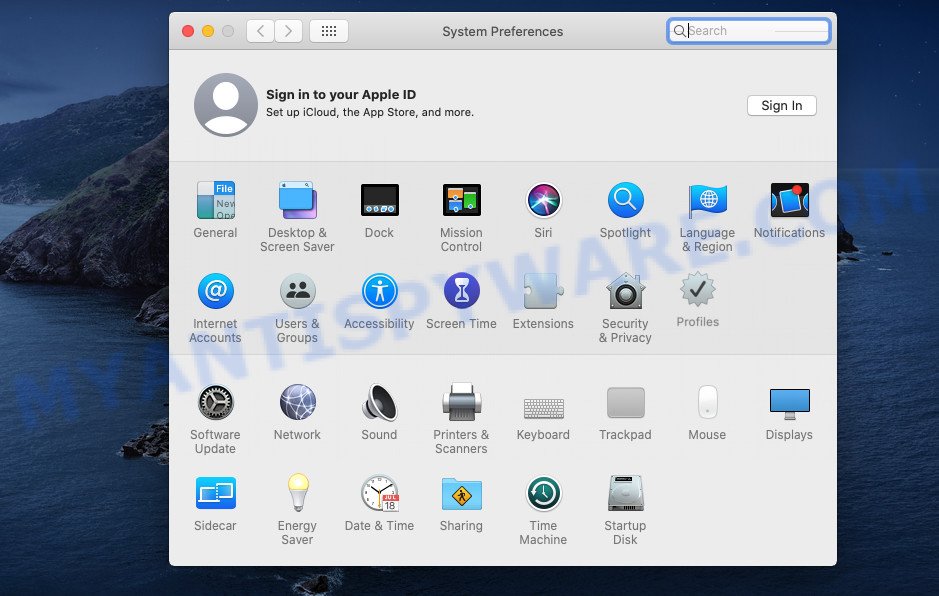
In System Preferences, click Profiles, then select a profile associated with PUAs and Adware.
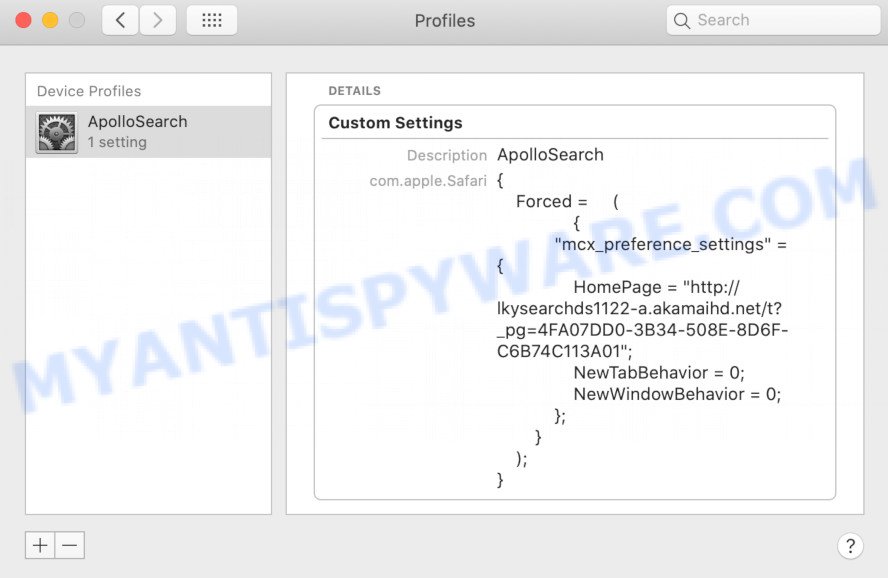
Click the minus button ( – ) located at the bottom-left of the Profiles screen to remove the profile.
Note: if you do not see Profiles in the System Preferences, that means there are no profiles installed on your Mac computer, which is normal.
Uninstall DLVPlayer associated software by using the Finder
In the next step, you need to check the list of installed applications on your Mac computer and delete all unused, unknown and questionable programs.
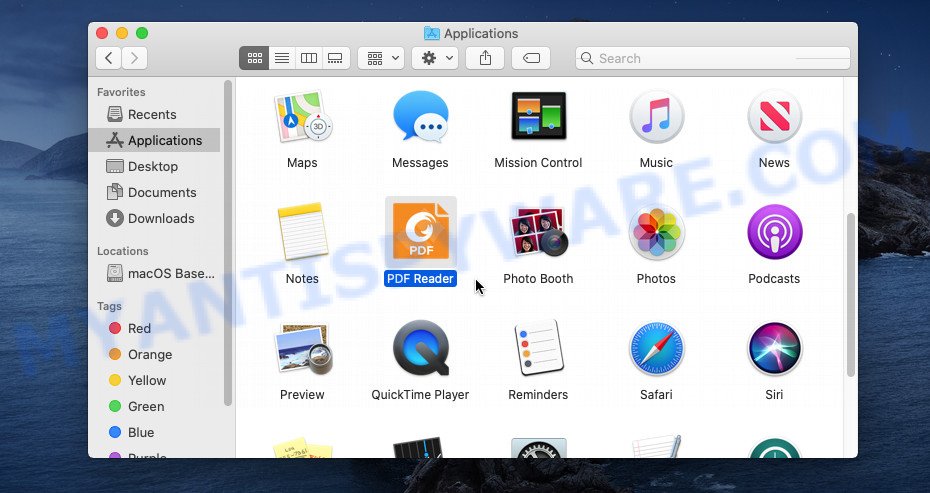
- Open the Finder.
- Click “Applications”.
- It will open a list of all programs installed on the MAC.
- Scroll through the all list, and delete dubious and unknown apps. Pay maximum attention to the application you installed last.
- Drag DLVPlayer, other dubious applications from the Applications folder to the Trash.
- Empty Trash.
Remove DLVPlayer related files and folders
Now you need to try to find DLVPlayer related files and folders, and then delete them manually. You need to look for these files in certain directories. To quickly open them, we recommend using the “Go to Folder…” command.
Click on the Finder icon. From the menu bar, select Go and click “Go to Folder…”. As a result, a small window opens that allows you to quickly open a specific directory.

Check for DLVPlayer generated files in the /Library/LaunchAgents folder

In the “Go to Folder…” window, type the following text and press Go:
/Library/LaunchAgents
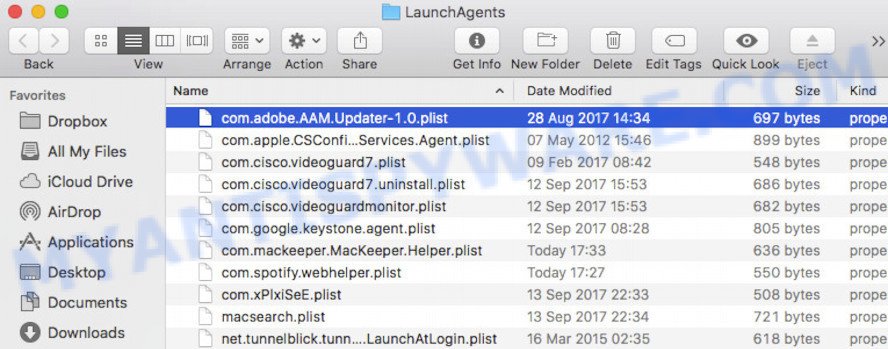
This will open the contents of the “/Library/LaunchAgents” folder. Look carefully at it and pay special attention to recently created files, as well as files that have a suspicious name. Move all suspicious files to the Trash. A few examples of files: search.plist, DLVPlayer.plist, com.machelper.plist, macsearch.plist and installapp.plist. Most often, browser hijackers, potentially unwanted programs and adware create several files with similar names.
Check for DLVPlayer generated files in the /Library/Application Support folder

In the “Go to Folder…” window, type the following text and press Go:
/Library/Application Support
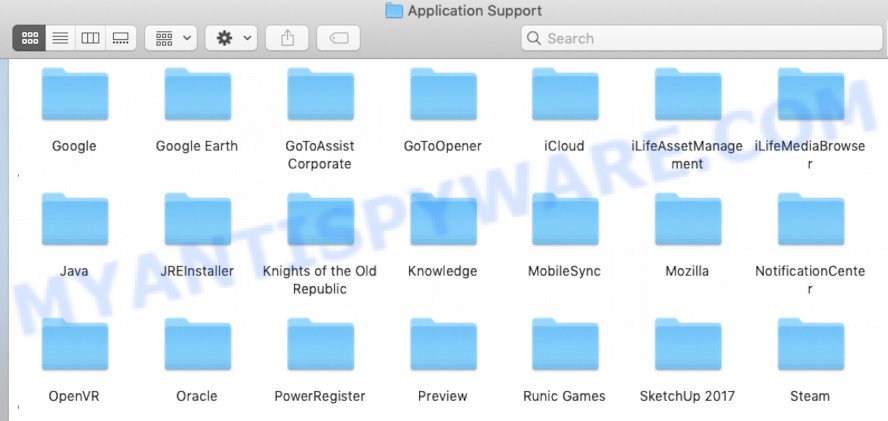
This will open the contents of the “Application Support” folder. Look carefully at its contents, pay special attention to recently added/changed folder. Move all suspicious folders to the Trash.
Check for DLVPlayer generated files in the “~/Library/LaunchAgents” folder

In the “Go to Folder…” window, type the following text and press Go:
~/Library/LaunchAgents

Proceed in the same way as with the “/Library/LaunchAgents” and “/Library/Application Support” folders. Look for suspicious and recently added files. Move all suspicious files to the Trash.
Check for DLVPlayer generated files in the /Library/LaunchDaemons folder
In the “Go to Folder…” window, type the following text and press Go:
/Library/LaunchDaemons

Carefully browse the entire list of files and pay special attention to recently created files, as well as files that have a suspicious name. Move all suspicious files to the Trash. A few examples of files to be deleted: com.DLVPlayer.plist, com.macsearch.plist, com.machelper.plist, com.installapp.plist and com.search.plist. In most cases, browser hijackers, potentially unwanted programs and adware create several files with similar names.
Scan your Mac with MalwareBytes
If you carefully followed the previous steps, then you should be able to get rid of DLVPlayer. Of course, very often adware, PUPs and browser hijackers hides on a Mac, disguising itself as legitimate apps and files. Therefore, in some cases, it is difficult for an inexperienced user to decide whether a particular file is part of potentially unwanted programs, adware and browser hijackers. Therefore, we recommend you to use MalwareBytes to scan the Mac.
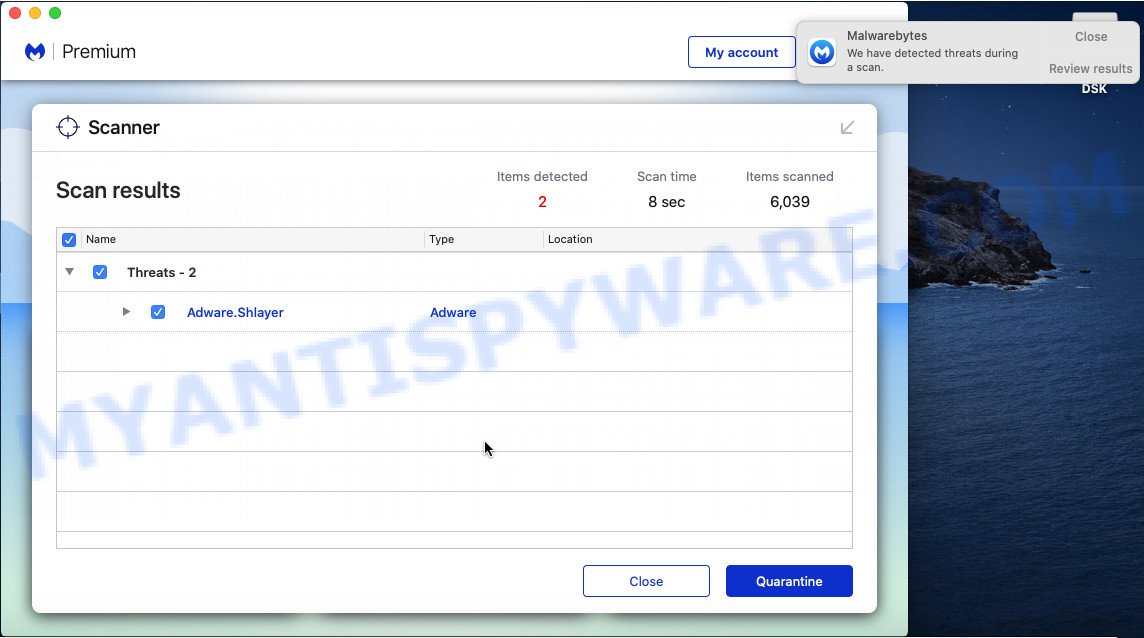
- Download MalwareBytes AntiMalware (MBAM) on your computer by clicking on the link below.
Malwarebytes Anti-malware (Mac)
21018 downloads
Author: Malwarebytes
Category: Security tools
Update: September 10, 2020
- After downloading is finished, close all applications and windows on your MAC. Open a file location. Run the downloaded file and follow the prompts.
- Click the “Scan” button to find adware. A system scan can take anywhere from 5 to 30 minutes, depending on your Apple Mac.
- When that process is done, the results are displayed in the scan report. Review the report and then click “Quarantine”.
Remove unwanted ads from Safari, Chrome, Firefox
If you have adware removal problem, then remove unwanted plugins can help you. In the steps below we will show you the method to delete harmful add-ons without reinstall. This will also help to remove any unwanted ads from your web-browser.
You can also try to delete unwanted ads by reset Google Chrome settings. |
If you are still experiencing issues with unwanted ads removal, you need to reset Mozilla Firefox browser. |
|
How to stay safe online
The AdGuard is a very good ad-blocker program for the Safari, Firefox and Google Chrome, with active user support. It does a great job by removing certain types of undesired ads, popunders, pop-ups, undesired new tabs, and even full page advertisements and web-page overlay layers. Of course, the AdGuard can block harmful websites automatically or by using a custom filter rule.
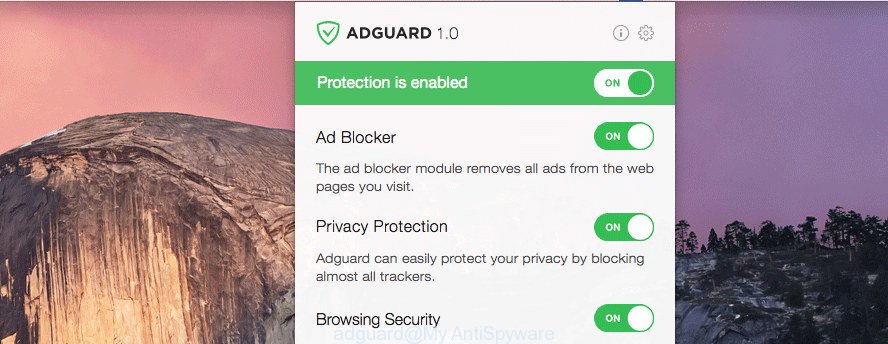
Click the following link to download AdGuard.
3779 downloads
Author: © Adguard
Category: Security tools
Update: January 17, 2018
Once the download is finished, run the downloaded file. The “Setup Wizard” window will show up on the computer screen.
Follow the prompts. AdGuard will then be installed. A window will show up asking you to confirm that you want to see a quick guidance. Click “Skip” button to close the window and use the default settings, or click “Get Started” to see an quick guidance that will assist you get to know AdGuard better.
Each time, when you launch your machine, AdGuard will launch automatically and stop unwanted pop up ads, block harmful and misleading web-sites.
Finish words
Now your MAC system should be clean of DLVPlayer, PUAs and Adware. We suggest that you keep AdGuard (to help you stop unwanted pop up ads and unwanted harmful web-sites) and MalwareBytes (to periodically scan your Apple Mac for new adwares and other malicious software).
If you are still having problems while trying to get rid of unwanted ads from the Safari, Google Chrome and Mozilla Firefox, then ask for help here here.
